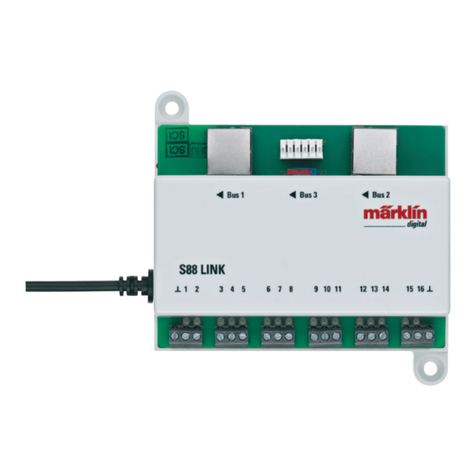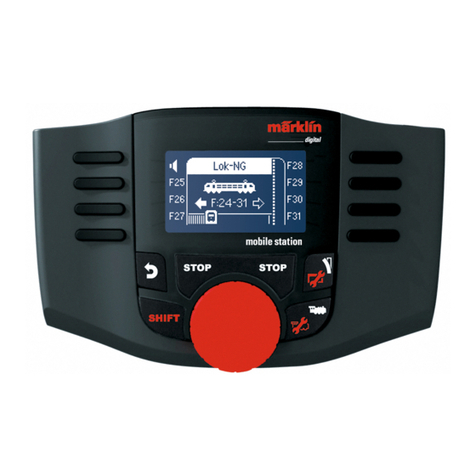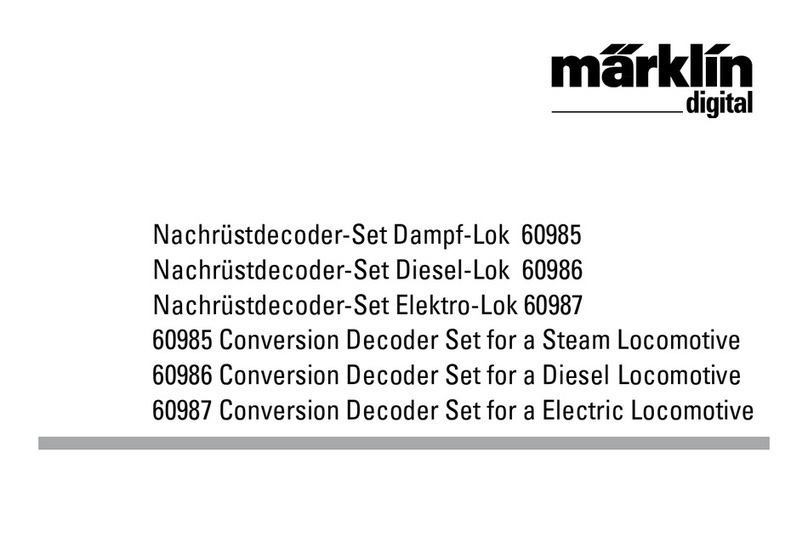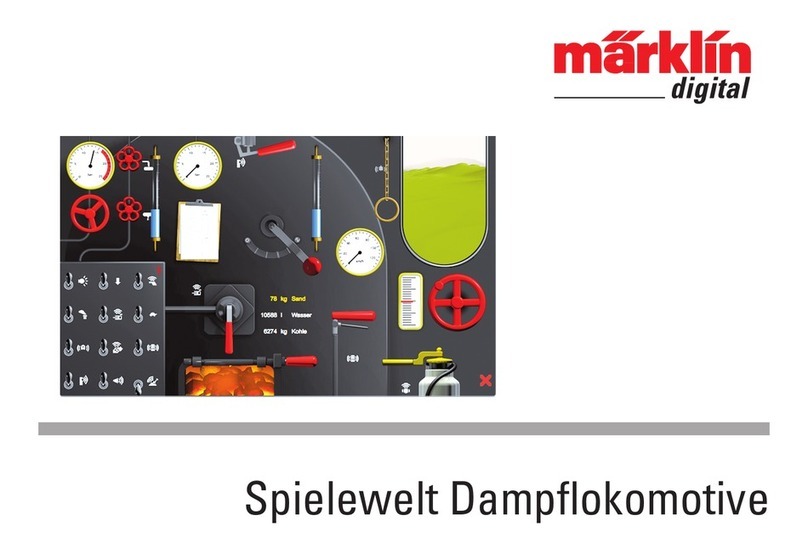Informations concernant le modèle réel
Parmi les wagons techniques les plus sophistiqués
de la Deutsche Bundesbahn, on peut citer diverses
voitures de mesure dont le rôle consiste à tester des
véhicules ferroviaires, des lignes ou encore à explorer
certaines sphères physiques ou techniques. Conçu
pour rouler à une vitesse pouvant atteindre 300 km/h,
le véhicule de mesure se distingue entre autres par
un roulement très silencieux. Grâce aux postes de
pilotage intégrés, il est possible de procéder à des
mesures à contresens sans devoir effectuer des
manœuvres de retournement. L’intérieur de la voiture
contient, en plus des espaces de travail comme la
salle de mesure, l’atelier ou la salle de dépouillement
des mesures, un espace dortoir et restauration ainsi
qu’une cuisine pour le ravitaillement des techniciens
et ingénieurs embarqués. D’une longueur de 26,4 m,
d’une largeur de 2,825 m et d’une hauteur de toiture
de 4,05 m, la voiture de mesure a les dimensions
des voitures usuelles actuelles à 4 essieux. Du fait
des équipements techniques et autres accessoires
embarqués, la voiture se révèle cependant nette-
ment plus lourde et fait ainsi partie de la série
Dienstüm 312 avec un poids de 62,8 t.
Informatie over het voorbeeld
Tot de technisch meest geavanceerde rijtuigen bij de
Deutschen Bundesbahn behoren de verschillende
meetrijtuigen die voor het controleren van voertuigen,
trajecten of voor het onderzoeken van bepaalde
natuurkundige of technische grenswaarden gebruikt
worden. Gebouwd voor een snelheid tot 300 km/h
heeft het rijtuig opvallend rustige loop eigenschappen.
Door de aan beide zijden in het rijtuig ingebouwde
besturingscabines zijn metingen in tegengestelde
richting mogelijk zonder extra rangeerbewegingen.
Het interieur van het rijtuig beschikt naast de werk-
ruimtes als, meetkamer, werkplaats of resultaten-
ruimte ook nog over een verblijf- en slaapruimte en
een keuken voor de verzorging van de in het rijtuig
werkende technici en ingenieurs. Met een lengte van
26,40 m, een breedte van 2,825 m en een dakhoogte
van 4,05 m komen de afmetingen van het meetrijtuig
overeen met de gewone vier-assige reizigersrijtuigen.
Door de hoeveelheid aan ingebouwde techniek
en de extra inrichting valt het rijtuig van de serie
“Dienstüm 312” met een gewicht van 62,8 t toch
beduidend zwaarder uit.
3
































